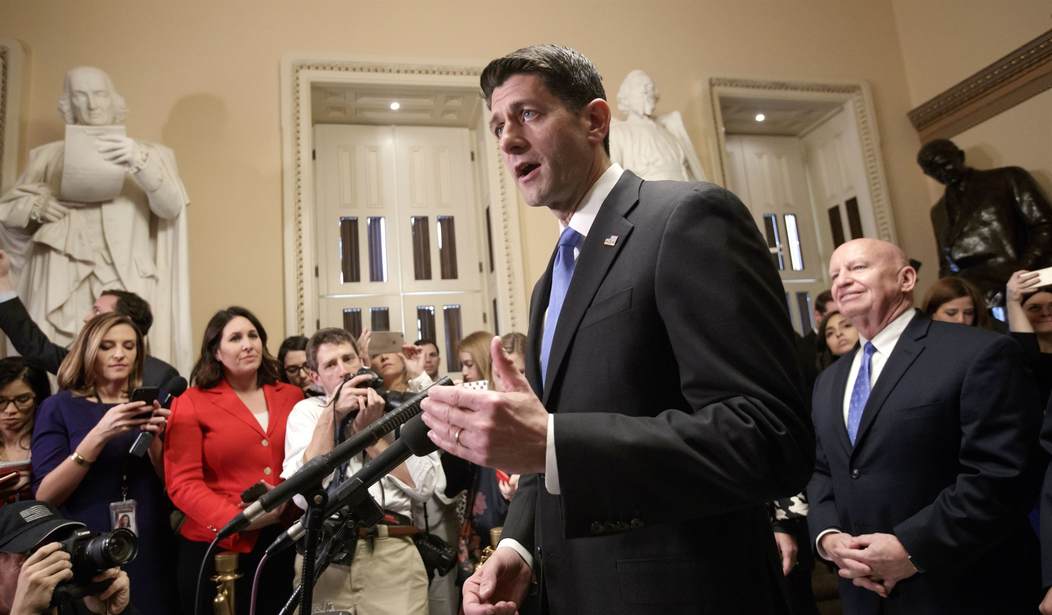Of the 150,493,263 filers who submitted individual income tax returns to the Internal Revenue Service for the 2015 tax year, only 99,040,729 paid any income tax at all.
Together, those Americans paid a record $1,457,891,441,000 in total income taxes -- for an average of $14,720 per taxpayer.
The other 51,452,534 -- or about 34.2 percent of all filers -- did not pay a penny. Their average income tax payment was $0.
This is a fundamental divide in the American tax system. On one side are those who do pay taxes; on the other, those who don't.
And the divide gets worse.
There were 30,417,609 filers who did not pay income taxes and received $89,614,869,000 in cash back from the federal government.
In other words, they got $89,614,869,000 in welfare payments.
We know this because the IRS tells us so. It calls the $89,614,869,000 in cash that the federal government paid to tax-return filers who paid no taxes the "refundable portion" of "refundable credits."
"Refundable credits were broken out into three parts: the portion used to offset income tax before credits, the portion used to offset all other taxes, and the refundable portion," the IRS explained in its comprehensive report on the individual income taxes it collected for 2015 (the latest year for which the data is available).
"The first portion, which was included in total tax credits, offset income tax before credits," said the IRS report. "The second portion offset all other taxes besides income tax, such as the self-employment tax.
"The IRS treated the last portion, the refundable portion, as a refund and paid it directly to taxpayers who had no tax against which to apply the credits, or whose credits exceeded income tax (and other income-related taxes)," the report said.
Recommended
"In total, taxpayers claimed $105.3 billion in refundable tax credits," the IRS said. "Of this, $5.7 billion was applied against income taxes and $10.0 billion against all other taxes. The remaining $89.6 billion in refundable credits was refunded to taxpayers."
That is to say it was "refunded" to "taxpayers" who paid no income taxes.
This was not a boon for the "rich."
In fact, according to data published in Table 3.3 of the report, 27,78,931 -- or about 91.2 percent -- of the 30,417,609 tax-return filers who did get a "refundable portion" from the IRS had an adjusted gross income of less than $40,000.
So who paid the taxes the federal government needed to send that $89,614,669,000 to those 30,417,609 who paid no income tax?
One major contributor was a group the IRS calls "married persons filing jointly."
In 2015, according to Table 1.2 in the IRS report, 54,294,820 belonged to this group -- with 41,551,043 joining the side that did pay taxes, and 12,743,777 joining the side that did not.
Thus, while 34.2 percent of all filers paid no income taxes, only 23.5 percent of married couples filing jointly paid no income taxes.
The 41,551,043 married couples filing jointly who did pay income taxes accounted for only 27.6 percent of all 150,493,263 filers. But they made up about 42 percent of the 99,040,729 filers who did pay income taxes.
More tellingly, of the record $1,457,891,441,000 in total income taxes the IRS collected for tax year 2015, married couples filing jointly paid $1,040,684,097,000 of it -- or about 71.4 percent.
So, married couples filing jointly constituted only 42 percent of filers who actually paid income taxes, but they paid 71.4 percent of the income taxes.
These 41,551,043 taxpaying married couples, according to the IRS data, paid an average of about $25,046 in federal income taxes in 2015.
Now, some may say: But there are two people in a married couple who file jointly; of course they should pay more taxes than a single person.
But did single people filing tax returns pay half as much as married couples?
The IRS says 71,086,947 single persons filed tax returns in 2015. Of these, 23,345,062 -- or 32.8 percent -- did not pay any income tax. The 47,741,885 who did paid $326,342,729,000.
That works out to an average of about $6,836 in total income taxes per taxpaying single person.
At that rate, it would take 3.66 taxpaying singles to surrender to the federal government the same income tax as one taxpaying married couple.
The bottom line: The federal government is financially dependent on income tax-paying married couples who jointly file their tax returns, and it has made 30,417,609 filers who pay no income taxes dependent on government by handing them $89,614,669,000 in a single year.
History should apply this test to the Republican tax plan: Did it decrease both the burden on the former and the dependency of the latter?























Join the conversation as a VIP Member